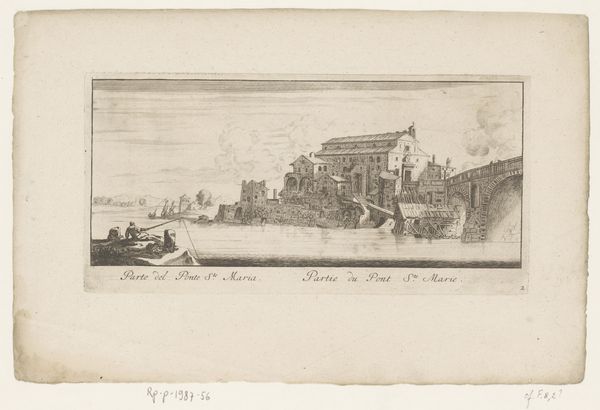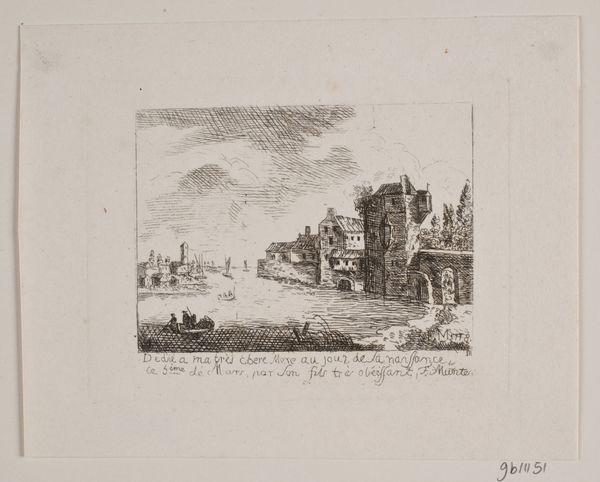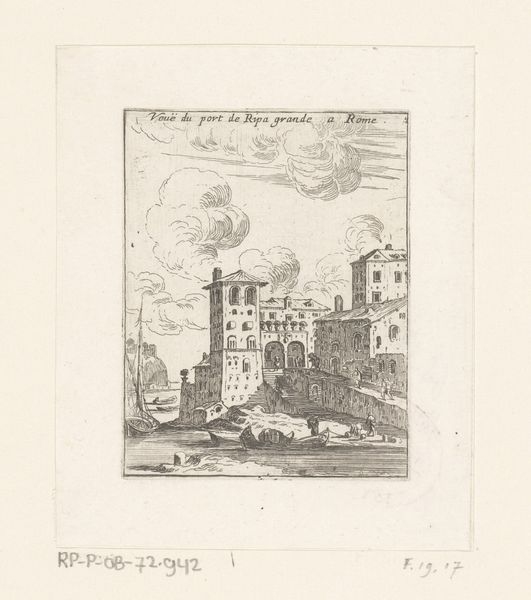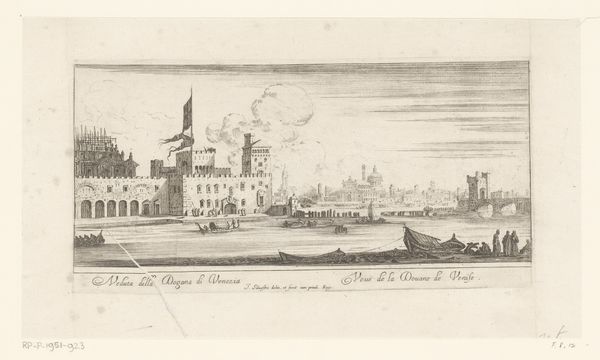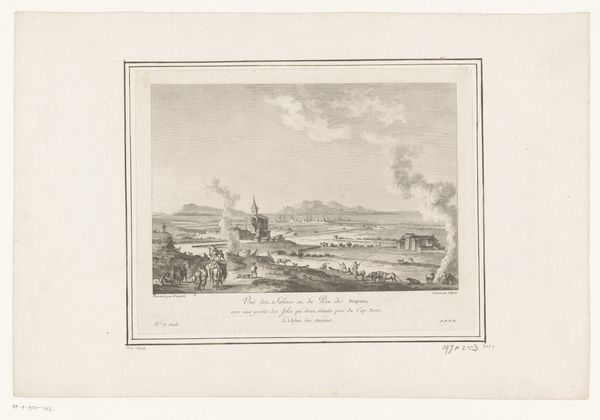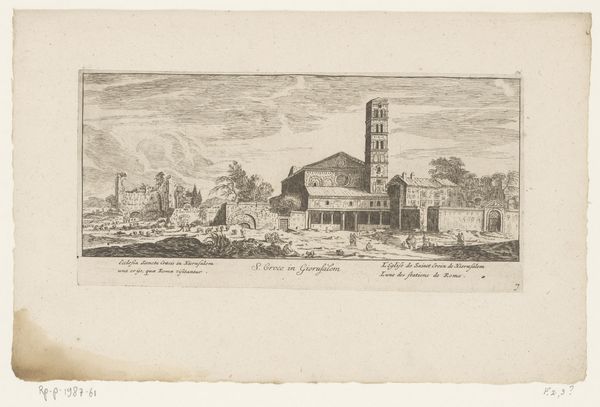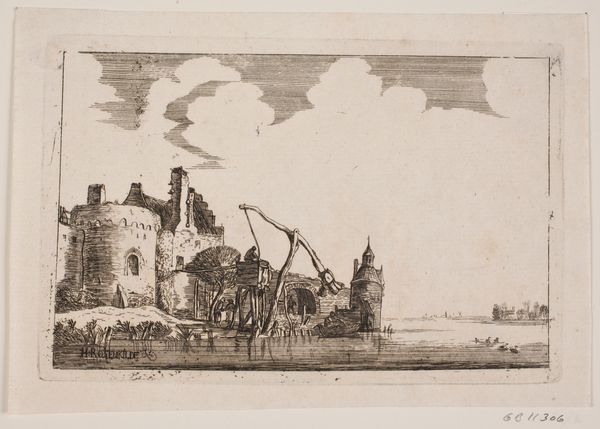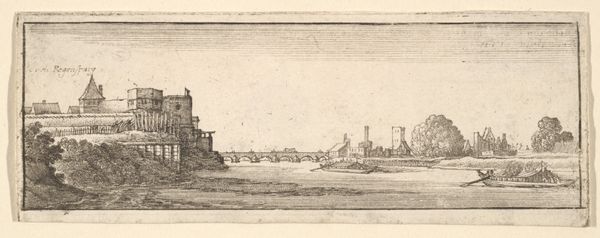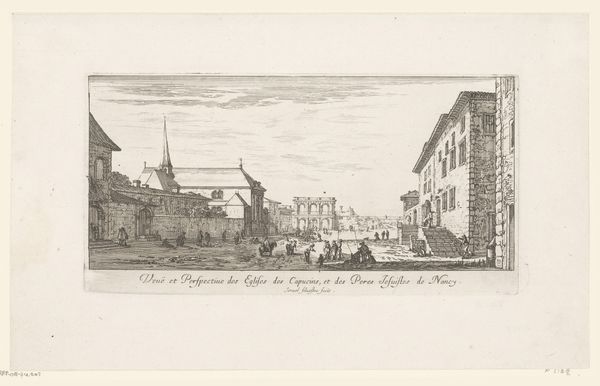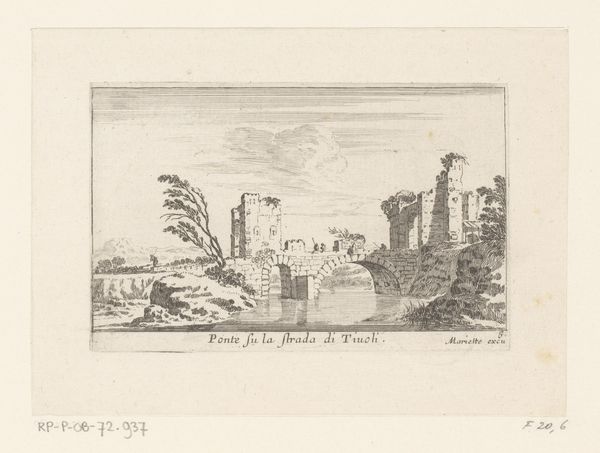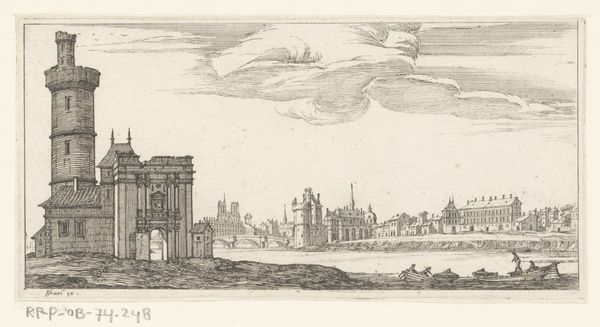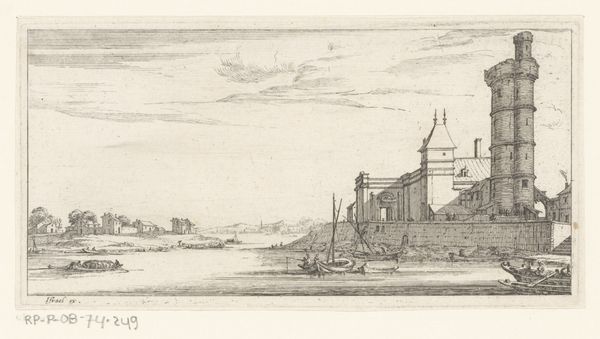
print, engraving
#
baroque
# print
#
old engraving style
#
cityscape
#
engraving
Dimensions: height 81 mm, width 128 mm
Copyright: Rijks Museum: Open Domain
Curator: Let's discuss "Gezicht op de haven van Marseille," or "View of the Port of Marseille," an engraving made by Israel Silvestre sometime between 1631 and 1657. It resides here at the Rijksmuseum. Editor: Immediately, I’m struck by the desaturated stillness of it all. It's a port scene, yes, but rendered in a way that almost feels dreamlike and strangely melancholic. It certainly presents a stark contrast to the vibrancy of the actual, historical port of Marseille. Curator: Notice how Silvestre employs hatching and cross-hatching to create subtle gradations of tone, almost like a delicate watercolor, despite being an engraving. The artist gives the illusion of depth through the strategic arrangement of visual elements and contrasts, even though we know printmaking inherently lacks the full range of tonal values. Editor: The composition feels purposefully ordered, even staged. Silvestre offers us this view during a period rife with maritime expansion and intense colonial trade, yet the print is notably silent on these themes, presenting instead a more sanitized, picturesque representation. The composition, dominated by that rather imposing tower, feels designed to project power, perhaps reinforcing France's emerging maritime dominance. Curator: Indeed, that solid structure in the center, the strategic use of line, leading the eye towards a vanishing point… It constructs an idealized version of the harbor—note the meticulous precision, the almost mathematical arrangement of space. Even the clouds are formalized, becoming decorative elements. Editor: Yet this "idealization" papers over a multitude of historical realities. Consider who this piece was likely intended for. Silvestre probably sought wealthy patrons removed from the harsh realities of port life. What perspectives are deliberately excluded here, then? Curator: Precisely, it demands an aesthetic consideration over socio-political ones. We must look at the structural and symbolic elements at play, the formal resolution that allows a piece such as this to stand the test of time and genre. Editor: While I concur about its structural significance, it feels negligent to ignore the sociopolitical undercurrents. Analyzing art demands asking difficult questions and considering perspectives of those whom history and art history have systematically silenced and ignored. This is critical when grappling with pieces that are themselves subtle political articulations of historical grand narratives. Curator: An interesting intersection for a continued conversation. Thank you. Editor: Likewise, that was very insightful.
Comments
No comments
Be the first to comment and join the conversation on the ultimate creative platform.
